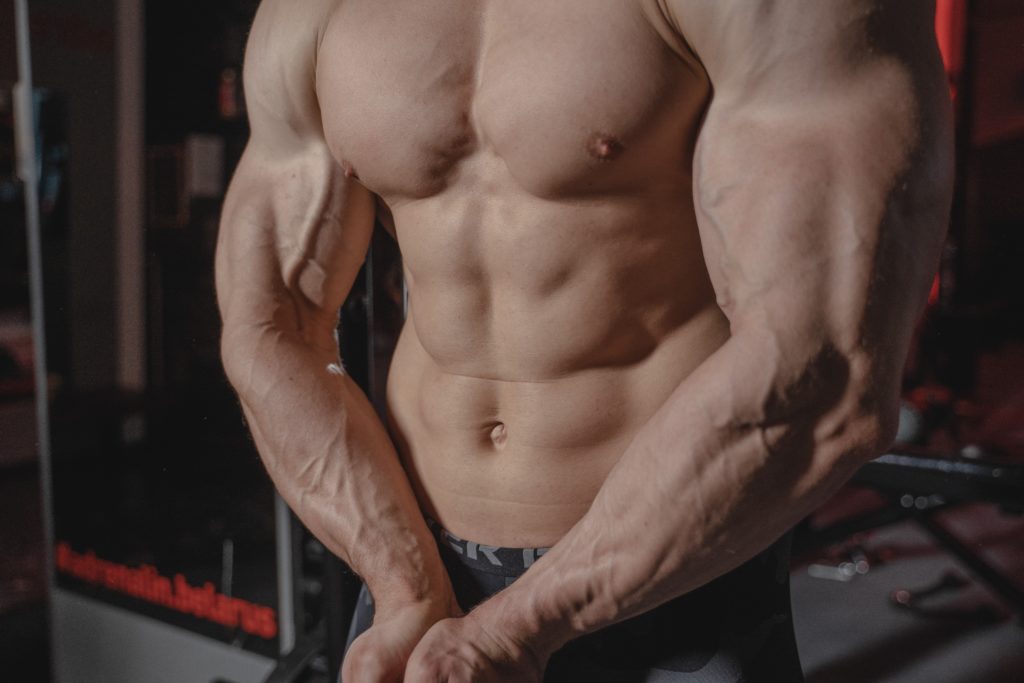
To build triceps, first of all, it is important to learn how to feel their work – and for this you need to know the correct mechanics of performing the exercises. For example, from an anatomical point of view, triceps exercises involve pushing off – not lifting weights at all.
We also note that to train the triceps, you will need a barbell or dumbbells – or, when training in the gym, blocks. Unfortunately, due to the mechanics of the work of this muscle group, at home without equipment, only reverse push-ups can be performed – which is not enough for a full pumping of the triceps.
The triceps are the key muscles in the arms. They account for up to 70% of the mass of the upper limbs, while biceps – about 30%. Moreover, if the biceps is a flexor muscle and is necessary for lifting weight, then the triceps is an extensor.
On the one hand, it is easier to swing triceps than other arm muscles due to the characteristic burning sensation during exercise. On the other hand, triceps are easily overloaded, which will negatively affect any other exercises that involve the arms (for example, pull-ups and bench press).
In other words, when training the triceps, it is necessary to separate basic and isolation exercises. For example, first work out the pectoral muscles, and at the end of the workout, perform 2-3 targeting exercises for triceps with dumbbells – paying attention to the technique.
You need to swing triceps once or twice a week. The total number of sets in triceps exercises should be 4-6 approaches – in other words, 2 exercises in 2-3 sets or 3 exercises in 1-2 sets. The number of repetitions is 8-15 repetitions in each set.
To increase the effectiveness of triceps training, it is recommended to alternate the load. First there is an easy week (that is, functional exercises with light weight and high repetitions), then a medium one, then a hard week, followed by one week of rest.
Best Triceps Exercises
The basic exercises for pumping triceps are reverse push-ups on the bench, French bench press and narrow grip barbell press. In addition, an important exercise is the pull of the upper block with a rope – one of the few that uses the lateral head in the work. Since the mechanics of movements are in many ways similar, it is recommended not to combine the exercises presented, but to alternate.
1. Reverse push-ups from the bench
Starting position – heels touch the floor, hands on the bench behind your back. Slowly lower your torso down, linger at the bottom point, then with an explosive force push your body weight up over the bench. The elbows are directed backward. To make it harder, use an extra load by putting the weight on your hips.
2. French press
The mechanic of the exercise is to slowly raise the weight from behind the head – due to the conscious involvement of the triceps. The exercise is usually done with a curved EZ bar because it helps keep your elbows parallel to each other. However, the French press can also be performed with dumbbells.
3. Bench press with a narrow grip
Exercise to work out the medial head of the triceps. Lie on a bench (keeping your feet firmly on the floor), grab a barbell or dumbbells with a narrow grip (10-15 cm), then lift the weight up. During execution, the elbows should be pressed as close to the body as possible.
4. Bent over triceps extension
Exercise for pumping the long and lateral heads of the triceps. When pulling the arm back, make sure that the elbow does not change position (that is, do not swing the arm back and forth or left and right). Also watch out for the arch of the back – to do this, keep the abs slightly tense.
5. Extension of the arms from behind the head
Sit on a bench with your back straight. With one hand, lower the dumbbell behind your head (the elbow is locked and close enough to the head), then slowly return to the starting position. Also keep your abs tense during the exercise.



